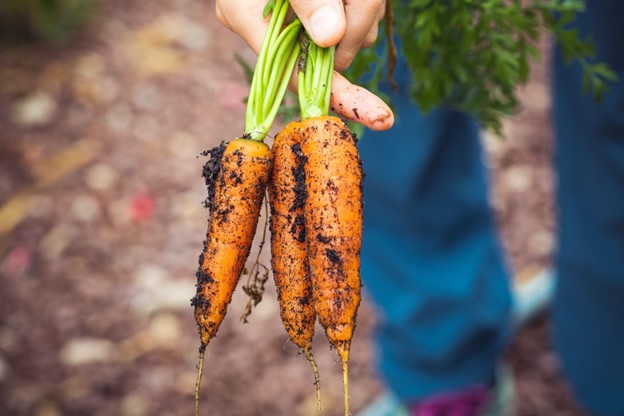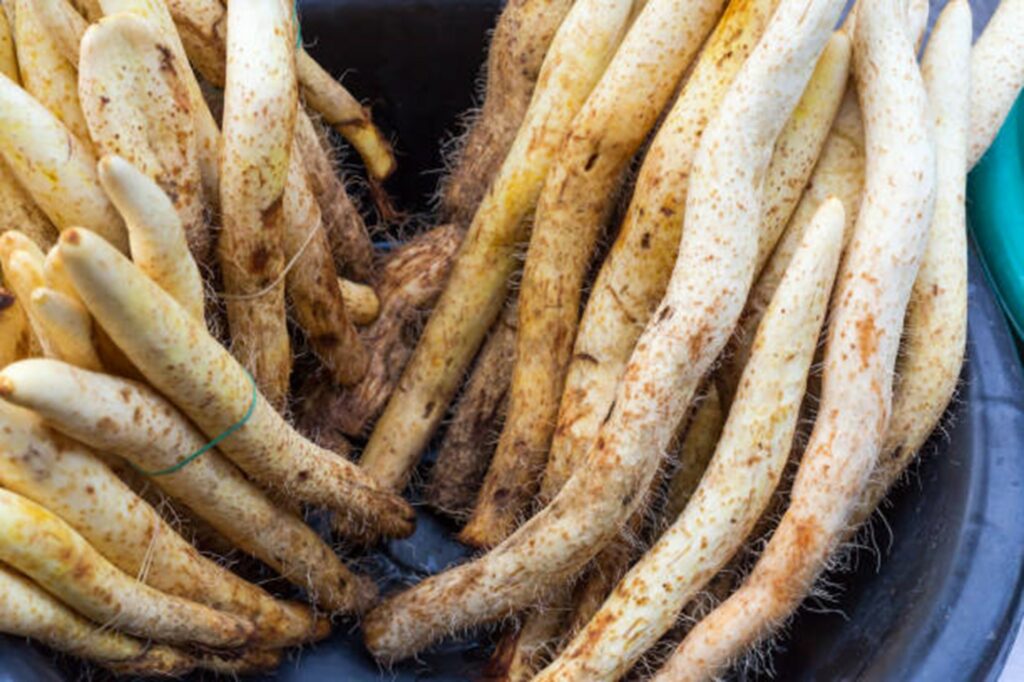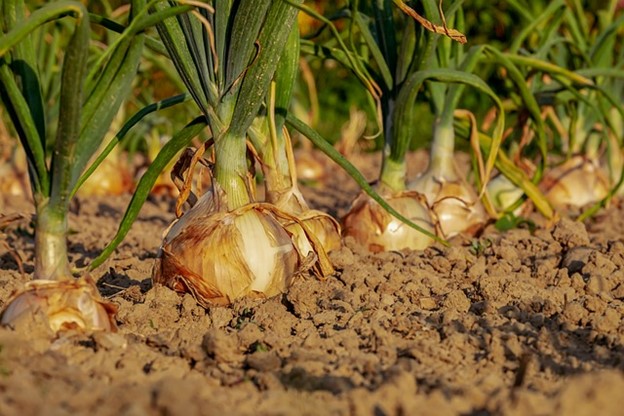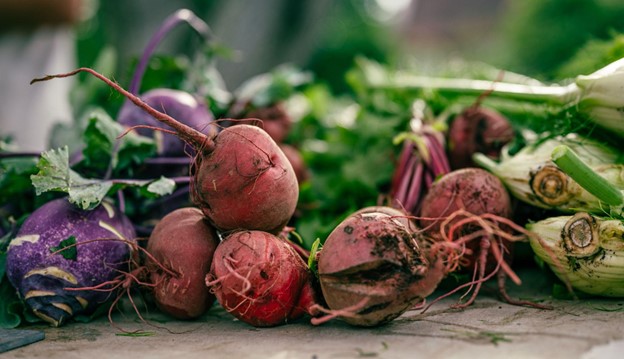Introduction:
Ahoy, adventurous souls and nature enthusiasts! Have you ever wondered what culinary delights lie beneath the surface of the wild landscapes we often tread upon? Brace yourself, for we are about to embark on a journey of gastronomic discovery that will unveil the well-kept secrets of the wilderness – the hidden edible roots! These often-overlooked gems of nature not only provide a feast for our senses but also offer a unique connection to the bounties of the earth. In this article, we are diving deep into the earth to dig out 10 extraordinary root vegetables that Mother Nature herself has tucked away for the brave and curious. So, without further ado, let’s unearth the mysteries of the wild and unveil the hidden edible roots: dig into 10 root vegetables that can be found in the wild. Enlist 10 roots that can be eaten.
The Wild Roots Adventure: A Culinary Quest
Are you ready to set foot on this wild culinary expedition? Let’s lace up our hiking boots, grab our trusty foraging tools, and venture into the heart of untamed landscapes where these remarkable root vegetables lie in wait. Get ready to feast your eyes – and your taste buds – on these wild delicacies that offer not only sustenance but a touch of the wild’s flavor. Here are the 10 hidden edible roots that we’re about to explore:
1. Woodland Wonders: Wild Carrots (Daucus carota)
The Carrot’s Wild Side
First up on our list is the familiar yet surprisingly wild carrot! As it turns out, the carrots we know from the grocery store have a rugged sibling thriving in the wild. These wild carrots boast an earthy, slightly peppery flavor that adds a unique twist to your dishes.
Foraging Tips
- Look for feathery leaves and clusters of white flowers to identify wild carrots.
- The taproot is the prize – pull it up carefully, and there you have it, a wild carrot ready to be washed, peeled, and savored!
Culinary Delights
Wild carrot taproots can be grated into salads, roasted for a satisfying side dish, or even turned into a flavorful soup. Don’t miss the chance to enjoy this untamed relative of the orange carrot we all know!

2. Earthy Allure: Burdock (Arctium lappa)
Root with a Twist
Next, we have burdock, a root vegetable that’s no stranger to Asian cuisine. With its long, brown exterior and a crisp, mildly sweet interior, burdock has a taste that’s both familiar and exotic.
Foraging Tips
- Spot the large, heart-shaped leaves and follow them down to the earth where the burdock root resides.
- Harvest the younger roots for a more tender and flavorful experience.
Culinary Delights
Burdock roots can be peeled, sliced, and stir-fried with a medley of vegetables, creating a delectable dish that’s rich in both flavor and nutrients. If you’re feeling adventurous, try pickling burdock for a tangy treat!
3. Wild Harmony: Chicory (Cichorium intybus)
Bitter Beauty
Moving along, let’s talk about chicory – a root with a hint of bitterness that can add depth to your culinary creations. Its earthy undertones and slightly bitter taste make chicory a versatile ingredient in both sweet and savory dishes.
Foraging Tips
- Look for bright blue flowers and elongated leaves that resemble dandelion greens.
- Beneath the surface, you’ll find the chicory root, ready to be incorporated into your culinary experiments.
Culinary Delights
Chicory roots can be roasted, ground, and brewed into a coffee-like beverage that’s both invigorating and caffeine-free. Alternatively, use grated chicory roots to elevate your salads or stews with a touch of wild sophistication!
4. Nature’s Sweetness: Wild Yam (Dioscorea spp.)
Yam-y Goodness
Ah, the wild yam – a hidden gem that adds a touch of sweetness to the wild roots collection! Unlike its starchy counterpart found in grocery stores, wild yams offer a more nuanced flavor profile with hints of earthiness and natural sweetness.
Foraging Tips
- Search for vines with heart-shaped leaves climbing their way up trees or bushes.
- The tuberous wild yam root hides beneath the forest floor, waiting to be uncovered.
Culinary Delights
Wild yams can be boiled, mashed, or even made into delectable pies that celebrate the untamed essence of this root vegetable. Embrace the wild sweetness that nature has to offer!

5. Subterranean Marvel: Wild Radish (Raphanus raphanistrum)
Radish Rampage
Get ready for a peppery punch with the wild radish! This feisty root vegetable brings a spicy kick to your dishes, reminiscent of its domesticated cousin found on salads.
Foraging Tips
- Identify the bright white or purple flowers that adorn the wild radish plant.
- Beneath the soil, you’ll discover the wild radish root, ready to add a bold twist to your culinary endeavors.
Culinary Delights
Grate wild radish roots to infuse a burst of flavor into your salads or use them as a zesty topping for your favorite dishes. These wild roots are all about turning up the heat!
6. Woodsy Wonder: Wild Parsnip (Pastinaca sativa)
Parsnip Potency
Introducing the wild parsnip, a root vegetable with a hint of nutty sweetness and an earthy undertone. Don’t let its modest appearance fool you – wild parsnip is a true powerhouse of flavors.
Foraging Tips
- Seek out clusters of yellow flowers atop tall, hollow stems.
- Hidden beneath the forest floor, the wild parsnip root awaits its transformation into a culinary masterpiece.
Culinary Delights
Roasting or boiling wild parsnip roots can enhance their natural sweetness, creating a delightful side dish that pairs well with various main courses. Embrace the nutty goodness that this wild root has to offer!
7. Underground Gem: Wild Onion (Allium spp.)
Onion Unleashed
Prepare to be amazed by the wild onion – a root vegetable that brings a burst of pungent flavor to the wilderness. With its distinct aroma and tangy taste, wild onions are a treat for the taste buds.
Foraging Tips
- Spot the clusters of tube-like leaves that resemble chives.
- Below the earth’s surface, you’ll find the wild onion bulb, ready to add a kick to your culinary creations.
Culinary Delights
Wild onion bulbs can be diced and used as a bold seasoning for your dishes or incorporated into soups and stews for a flavorful twist. Get ready to savor the wild side of the onion family!

8. The Wild Tangle: Wild Garlic (Allium ursinum)
Garlicky Goodness
Get ready to unleash the pungent power of wild garlic! With its garlicky aroma and bold taste, this root vegetable adds a touch of the wild to your culinary experiments.
Foraging Tips
- Identify heart-shaped leaves that emit a strong garlic scent.
- Beneath the forest’s cover, you’ll stumble upon the wild garlic’s underground treasure.
Culinary Delights
Wild garlic leaves and bulbs can be used to make a delectable pesto or added as a flavorful garnish to your dishes. Embrace the wild garlic’s robust taste and aroma!
9. Ancient Flavors: Arrowhead (Sagittaria spp.)
Arrows of Flavor
Introducing arrowhead, a root vegetable that connects us with ancient culinary traditions. With its nutty taste and starchy texture, arrowhead adds a touch of nostalgia to your wild dining experience.
Foraging Tips
- Look for arrowhead-shaped leaves growing in wetlands or near bodies of water.
- Beneath the water’s surface, you’ll find the arrowhead tubers, ready to be harvested for your culinary endeavors.
Culinary Delights
Boil, steam, or fry arrowhead tubers to unlock their natural nutty flavor. These roots are a testament to the time-honored traditions of foraging and feasting on the gifts of the wild.
10. Nature’s Palette: Wild Beet (Beta vulgaris)
Beet the Wild
Last but not least, let’s delve into the wild beet – a root vegetable that adds a burst of color and flavor to your wild culinary creations. With its earthy taste and vibrant hues, wild beets are a feast for both the eyes and the palate.
Foraging Tips
- Look for clusters of broad, reddish-purple leaves growing close to the ground.
- Beneath the soil’s surface, you’ll discover the wild beet roots, waiting to be harvested.
Culinary Delights
Wild beet roots can be roasted, boiled, or even pickled to create dishes that celebrate the untamed beauty of nature. Embrace the wild colors and flavors that the wild beet brings to your table!

FAQs: Unearthing the Roots of Curiosity
Q1: Are these wild roots safe to eat?
A: Absolutely! However, always ensure that you correctly identify the plants before consuming them. Using field guides or seeking guidance from experienced foragers is recommended.
Q2: Can I find these wild roots everywhere?
A: The availability of these roots depends on the region and habitat. Some may be more abundant in certain areas, so keep an eye out during your hikes and outdoor adventures.
Q3: Are there any poisonous look-alikes?
Yes, there are some plants that resemble these edible roots but can be toxic. It’s crucial to learn to differentiate between similar-looking plants to avoid any mishaps.
Conclusion: Unveiling the Hidden Edible Treasures
And there you have it, intrepid explorers and culinary aficionados! The world beneath our feet is teeming with hidden edible treasures waiting to be discovered. From the wild carrot’s earthy charm to the bold flavors of the wild radish, each root vegetable adds a touch of the wild to our plates and a connection to the landscapes we roam. So, the next time you’re wandering through the untamed wilderness, keep your eyes peeled for these hidden gems – the hidden edible roots: dig into 10 root vegetables that can be found in the wild. Enlist 10 roots that can be eaten. Remember, nature’s pantry is open, and it’s brimming with flavors that are waiting to be unearthed!

Leave a Reply